2022-23 has gone better than anyone at Arsenal could have ever imagined, with the Gunners topping the table for the vast majority of the campaign. After sixteen matches, only two sides have taken points off Arteta’s men, with the Spaniard’s side becoming completely solidified at all ends of the pitch. Here is our analysis of Arteta’s Arsenal in 2022-23.
SYSTEM OF PLAY: 4-2-3-1

Mikel Arteta has stayed consistent in deploying the same system of play throughout each match of the Premier League season, which I deem most closely to resembling a 4-2-3-1. Arteta has adapted some of his tactics from the previous campaign, and one of the most striking has been an advanced role for the energetic Granit Xhaka. This is where many people will classify the shape as being either a 4-3-3 or 4-1-4-1. The 4-1-4-1 is perhaps most correct in its consideration, as Xhaka will not only step forward into the attack as Partey holds the base of midfield, but he will also step up in the team’s press.
For reasons we’ll illustrate in depth, Xhaka is however tasked with being more true to an ‘8’ role than one of a floating ‘8’, and his counter-part Martin Ødegaard is the one with significantly more freedom in floating about the pitch as a distinctive ’10’.
Embed from Getty ImagesBefore delving into the deeper minutiae, it’s worth detailing the fine-tuning that Arteta has done with his squad since the start of the previous campaign, and the players he’s most closely trusted to carry out the job. Ten players have played over double the minutes of the names ranking 12th and below on that list, with only Zinchenko suffering from regular injury trouble enough to keep him out of the side for long. Everywhere you look, Arteta now has a number of leaders on the pitch.
Embed from Getty ImagesThis isn’t something that was often said of the team in the past, who were historically criticized for lacking leadership and having a soft underbelly. Just about every British pundit imaginable claimed that clearly no one was yelling at anyone else in the dressing room (particularly in the Aubameyang captaincy era), and to them, that was a significant problem.
But now, the Gunners are clearly in constant communication as they go about their tasks. Ødegaard wears the armband and captains the team through his vibrancy and spirited efforts on the pitch, but it’s the likes of Xhaka, Gabriel and Ramsdale who feel more like captain figureheads as they spur the team on and settle for nothing short of greatness. Zinchenko and Partey have both captained their national teams in the past, and Gabriel Jesus is also the type of player who’s always hungry to make his presence felt. This has made Arsenal an incredibly difficult side to beat this year, completely eliminating that supposed ‘soft underbelly’.
Embed from Getty ImagesAlongside Gabriel and Zinchenko in the back-line, William Saliba has entered the fold to a resounding effect, after successive loan spells in Marseille. He’s been brilliant in his 1v1 defensive duels, using his strength and command to great effect. His introduction to the team has meant Benjamin White‘s swapped over to right-back, which has arguably been one of the best moves Arteta’s made this season. White has been immaculate as a full-back, exuding class under pressure, galloping up the right wing, and engaging to nearly the same extent within that ‘Inverted Fullback’ role as Oleksandr Zinchenko.
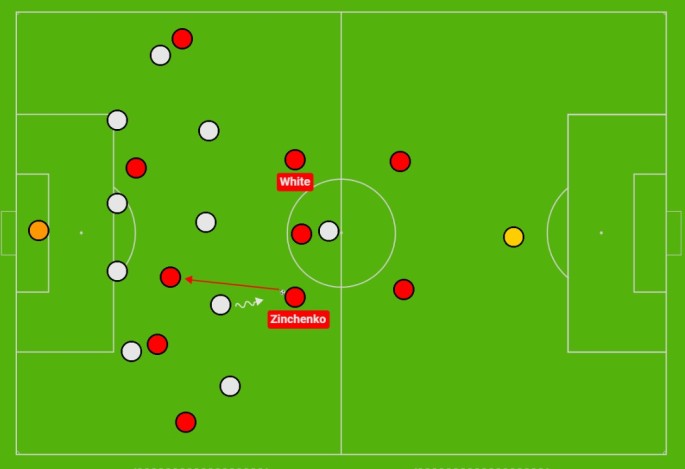
Thomas Partey’s also improved now that he’s the distinct ‘6’ in the team, excelling on the ball with his smart switches of play and precise passes up the field. The wings on either side of Ødegaard have only allowed the Norwegian to continue exuding his class in possession, as they both possess great pace and goal-scoring threat. That would be joint top-scorer Gabriel Martinelli and joint top goal-contributor Bukayo Saka. They’ve all seen improvements by the compliments provided from ex City star Gabriel Jesus, who mixes exceptional class on the ball with a deft touch in the penalty area to finish off chances.
All of a sudden, Mikel Arteta has a Premier League winning side in the making, and a keen recognition of how to get the best out of them in tandem.
ATTACKING PRINCIPLES
Embed from Getty ImagesArsenal have excelled in the attacking phases this season, scoring 2.5 goals per game. It’s the variety of their goal-scoring methods that have been particularly impressive, dominating every phase from open play to transitions to set-pieces.
Starting from the back of their attack within the build-up, Arsenal will build-up in the oh so common 2+3 shape. That includes Thomas Partey at the base of the midfield and top of the diamond that can form with Aaron Ramsdale in the earliest of stages. White and Zinchenko will initially start wide and then narrow as the play progresses up the pitch, either one at a time, or at the same time all the way into the attacking half.

Zinchenko loves to loop long passes from deep into the attacking half when he sees the right moment, and will carry on these behaviours all the way into the attacking half.
The presence of the Ukranian in that inverted position means that Granit Xhaka can then float up into the left-half-spaces, and participate in the brilliant combinations Arsenal can concoct down the left.

That includes Gabriel Martinelli and Gabriel Jesus often operating in close proximity, if not swapping positions altogether. Martin Ødegaard never likes to be away from the fun for long, and so he’ll often come across to compound the overload and ensure that the Gunners have a variety of movements heading into the penalty area at different moments.

Over on the right, Ben White‘s been superb in recognizing moments to either underlap or overlap Bukayo Saka, ensuring that the man who so often loves to be on his left-foot can still cause a great degree of unpredictability for defenders. Ødegaard will again come across to participate in the creation of those overloads, and in doing so, he can help to attract pressure away from someone like Thomas Partey to strike from range.

But it all starts from having that initial 2+3 base in midfield, ensuring that Zinchenko and White can lead the counter-press by immediately stepping up in central areas. If they succeed, the task to race back becomes non-existent for the likes of Xhaka and Ødegaard, and allows Arsenal to immediately counter the counterers.
It simultaneously offers the flexibility of Ødegaard to operate in the right-half-spaces and curl passes in from his left foot, and for Gabriel Jesus to float toward the ball and carry forward, knowing that other players are ready to occupy that centre-forward position. Both men love to be on the ball, and enact their brilliance in completely different ways. Gabriel Jesus will dribble past four players and dance his way all the way into the box, while the 24-year-old Norwegian midfielder wants to drop deeper in the possession phase and spray forward passes.

In playing through the centre of the pitch with so much security around them, they’ve both then been able to drift out to the wide areas on the regular, and participate in all of the trouble the Gunners love to cause. The dynamism and class that the entire team have exuded in those wide areas and wide overloads has been second to none in the league this season, and a hallmark of Arteta’s play.
DEFENSIVE PRINCIPLES
Embed from Getty ImagesAfter sixteen matches, Arteta’s men have conceded just 14 goals, with the second-lowest xG (0.88) and shots conceded (8.0). They’ve improved all around with the added presence of players like Zinchenko and Jesus raising the intensity, and the likes of Partey operating in a new role that firmly suits his capabilities at this stage in his career.
Embed from Getty ImagesFrom the front end of the pitch, Arsenal will frequently defend in a 4-1-4-1 formation, with Xhaka and Ødegaard working to limit passes into the nearest central midfielders, thus aiming to force play long. They press with intentions of not only inducing errors to win back possession, but for the purpose of creating chances on goal. Only City, Leeds and Newcastle have won possession in the final third more than their tally of 5.8 per game, and only Chelsea have made more tackles in the final third (3.19 to 3.27).

Deeper in the mid to low-block, Arsenal will form into a 4-4-2, with Ødegaard and Gabriel Jesus shaping up alongside each other in stopping progression from the centre-backs. The change of shape might be out of a desire to now stop those longer thrusts toward Arsenal’s goal, since progressive passes are now more dangerous. In the high-press, the 4-1-4-1 means they can stop play higher up the pitch and closer to the opposition’s goal, with central midfielders that both press and push, and screen passes into the half-spaces. When you have players like Saliba and Gabriel ready to step up on any attempts into those areas, it’s more difficult to progress against the Gunners. The same could be said of the presence of their full-backs, who remain ready to step up in the wide areas when required.
This might be the case on goal kicks in particular, where Martinelli will often start alongside Gabriel Jesus. This means that Zinchenko must remain ready to jump up a line and close down the left-side, where Arsenal are ready to set their trap around the more defensively minded midfielder in Granit Xhaka.

As previously mentioned, the Gunners have also naturally excelled in transition through the central base that the 2+3 provides. The ambition of sides operating against them would be to hit the wings immediately on the break, but this becomes more difficult when any opposition winger is forced with constantly defending the wide overloads Arsenal create in attack. We’ve yet to really see an Allan Saint-Maximin type hold a higher position to exploit the Gunners in transition, as it’s a risk few would be able to afford against all that Bukayo Saka can create.

Heung-Min Son for example tried to come all the way back to stop the overloads between Saka, Ødegaard and White. Not only did he struggle to contest those situations by getting too close to Saka, but he also limited his own ability to explode on the break, where we all know he excels. As a result, those wide overloads have not only been the hallmark of their play in attack, but a key mechanism by which they’ve been able to dominate the defensive phases.

Even if you are able to get past the initial set-up of Arsenal in transition, you usually still have to contend with the speed and strength of Saliba and Gabriel, plus the positional awareness of Thomas Partey. Backing up all of them is Aaron Ramsdale, who is fearless in coming off his line and commanding any situation.
Embed from Getty ImagesMistakes will happen for players like Gabriel and Saliba who want to do so much in and out of possession, and both could easily hone in on enacting Ramsdale’s level of fearless energy when using their strength in 1v1 duels. Even that is quite harsh, as it’s hard to beat Saliba’s superb tackle rate of 85.7%. If you want additional solidity, you can always throw on Takehiro Tomiyasu, who possesses the same level of pace and awareness to mitigate wide attacks.
That constant communication we talked about earlier is matched with a constant scanning of the field, particularly in transition, further making it difficult for opposition teams to overcome their solidity. With all of these sound adjustments in place, it’s no surprise why Arteta’s men have conceded less than a goal per game in the league this season.
CONCLUSION
Embed from Getty ImagesMikel Arteta’s Arsenal have been the best team in the league after the first sixteen games, and it’s resulted in the Gunners currently holding rank at the top of the table. Only City have bested their goal tally in attack, while only Newcastle have bettered their solidity in defense. Along the way, their dominance in the wide areas has meant that they’ve simultaneously excelled in limiting the attacking thrusts of their opposition. Arteta seems to have found a way to get the best out of each of his first-choice eleven, while working wonders to bring out the best in the team harmony as a whole. Whether or not the Gunners can lift the trophy for the first time since 2004 remains to be seen, but for now, Mikel Arteta has Arsenal playing some of the best football we’ve seen from the Gunners in the Premier League era.
Embed from Getty Images
So there it is! Our tactical analysis of Mikel Arteta’s Arsenal in 2022-23. Be sure to check out more Team Analyses, and follow on social media @mastermindsite and @desmondrhys. Thanks for reading and see you soon!
YOU MIGHT ALSO ENJOY…
Pep Guardiola – Manchester City – Tactical Analysis (2023-24)
This might finally be the year. It might finally be the year that Pep Guardiola and Manchester City don’t win the Premier League. Despite that, they’ve still been the most tactically complex team in the league, carrying on from much of the tactics that brought them a treble-winning triumph last season. Here is what Pep…
Enzo Maresca – Leicester City – Tactical Analysis
It has been a season to remember for Leicester City inside the Championship. They’ve been one of the league’s all-time top sides, and look fully prepared to hit the mark if they can keep hold of their star power leading into next season. Enzo Maresca and his team have done a brilliant job in assembling…
Unai Emery – Aston Villa – Tactical Analysis (2023-24 Edition)
Just shy of the halfway mark inside the 2023-24 Premier League campaign, Unai Emery’s Aston Villa have been the surprise package. In with a real shot of the top four, Emery’s Villa are even within touching distance of the Premier League title chase, currently sitting a single point behind Arsenal in the lead. With that,…
Mauricio Pochettino – Chelsea – Tactical Analysis
Despite all the hype surrounding Mauricio Pochettino’s arrival at Stamford Bridge and a host of new young prospects to excite the fanbase, Chelsea have more or less continued where they left off last season. That is, providing an underwhelming start to the 2023-24 campaign, currently sitting in 12th place. With that, we analyze Mauricio Pochettino’s…

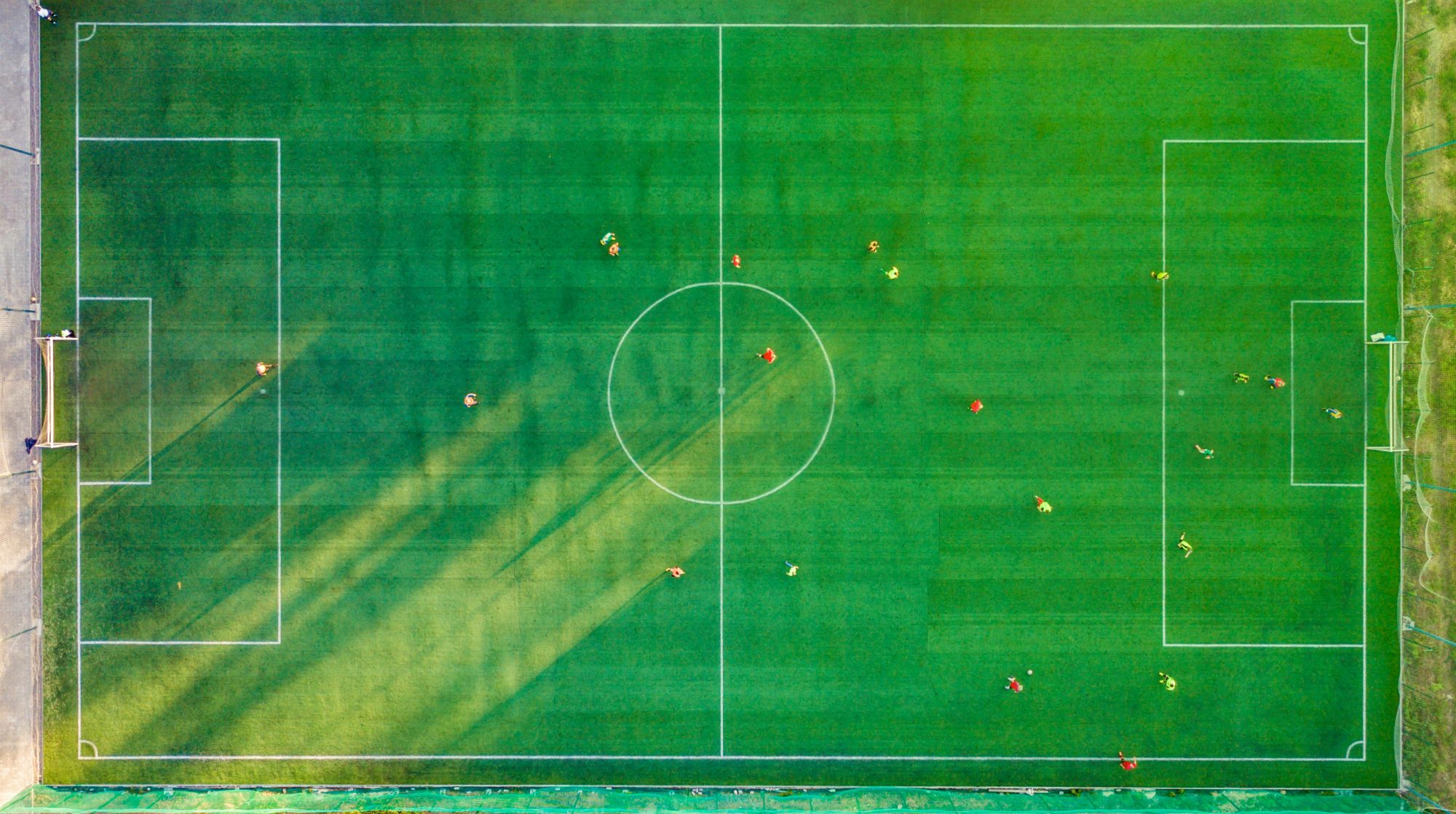
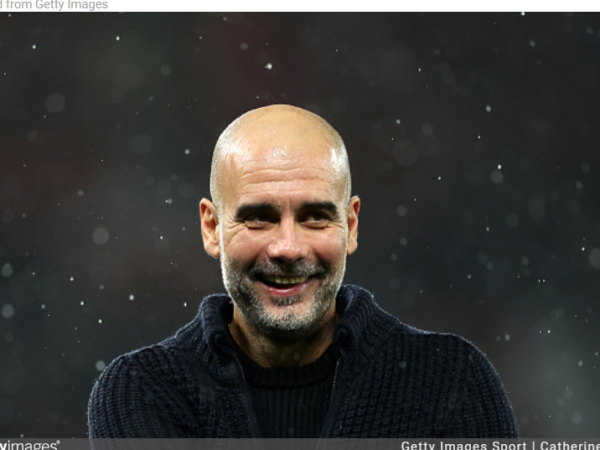
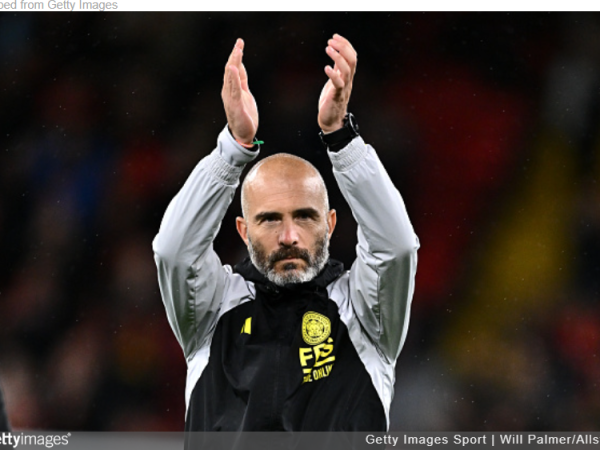

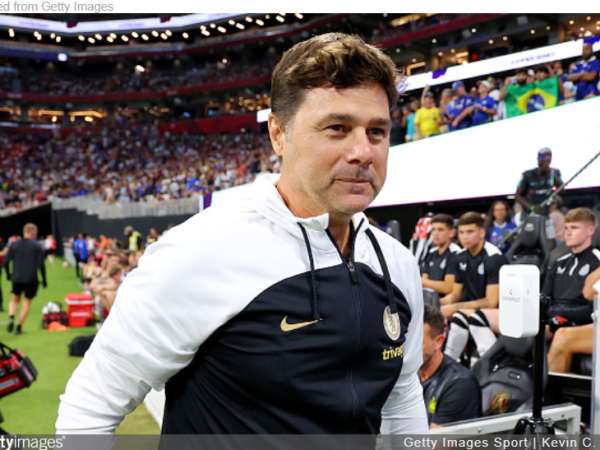
One thought on “Mikel Arteta – Arsenal – Tactical Analysis – 2022-23”